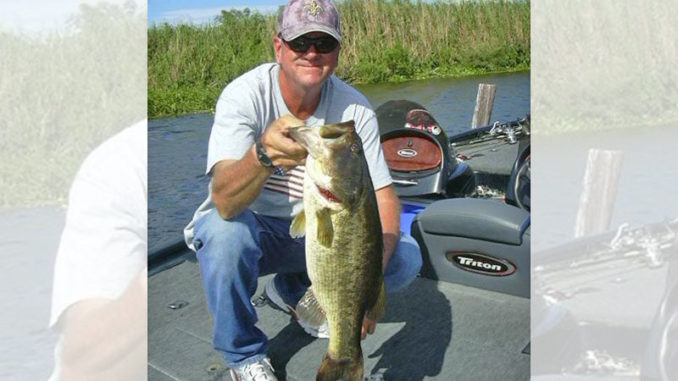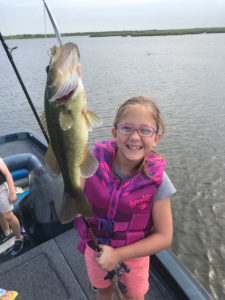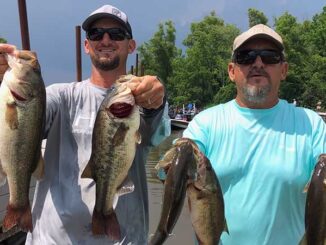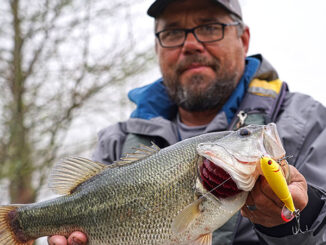
Drains, points in bayous are key to building stringers, angler says
October is that wonderful time of year when the scorching summer temperatures finally begin to relinquish their hold as cool fronts push through to make days on the water nice and comfortable.
But that also means bass are on the move, according to tournament angler Steven “Rock” Rockweiler of Luling.
“October can be challenging when fish start to move and scatter,” Rockweiler said.
But there are some good bets — especially in the watery mazes of South Louisiana, according to Rockweiler.
“The fish start moving from the larger bodies of water where they had migrated in the warm weather to dead-end canals and smaller bodies of water in the cold weather,” he said. “The fish can still be in the large waterbodies if the water is stable and the bait is present, and they could be anywhere between there and the dead-ends and smaller bays.”
So how can you locate fish in such times of uncertainty? Rockweiler said there’s one basic factor that will help.
“One thing about predatory fish: find the bait, and you will usually have some success,” he said. “The bass are still on shad in September and October — but moreso on panfish. Crawfish are buried until December or January.”
Bayous
This month, Rockweiler will pretty much abandon the larger bodies of water, focusing on bayous.
“Drains and points along the bayous are good places to start, but there has to be some water movement,” he said. “I will cast spinnerbaits along the banks on either side of the point and drain first, and then work the drain itself.
“Spinnerbaits are really good search baits, and when you pick up a bass or two, you can always go back over the area with plastics to fish it more thoroughly for a couple more bass.”

Two of his favorites are made by Humdinger and Delta Lures.
“I normally throw a ¼-ounce spinnerbait if I’m fishing a little faster or through grass,” Rockweiler said. “If I’m out a little deeper, I go to a 3/8-ounce or even a ½-ounce spinnerbait.
“One spinnerbait I love to throw when it’s warm is a 3/8-ounce spinnerbait with a single No. 4 Colorado blade. I cast it along trees, logs and hyacinths, and bring it along the structure — and then just stop it and let it helicopter down on a semi-slack line.”
Delta Lures’ bladed jig is another tool that will pull bass from submerged vegetation.
Rockweiler will often go back over a run-out with a slower bait to ensure he’s gotten every possible bite.
“It’s always a good idea to work a worm or craw worm in and around the drain. They may or may not be aggressive, and I have seen them pass on a faster-moving bait,” he said.
Rock’s fishing toolbox
Luling’s Steven “Rock” Rockweiler has been chasing bass for years, and that means he’s built up quite a collection of tackle from which to choose.
But that doesn’t mean his boat is packed to the gills every time he goes out.
“I probably have as much or more tackle than most fishermen, but over the years I have trimmed the amount of stuff I keep in the boat,” Rockweiler said.
Here’s the list of lures that he turns to tournament after tournament:
• Spinnerbaits — Delta Lures and Humdingers with white and white/chartreuse skirts — and sometimes even black skirts — are his favorites. He uses 1/4- to 1/2-ounce models, depending on the cover he’s fishing.
• Crankbaits — Mann’s Baby Minus 1s, Strike King KVD 1.5s, Bandit 200 series cranks, Rat-L-Traps and Cordell Spots are tops on his list. He also includes Rapalas and Rogues in the list of lipped hard baits.
“Crankbaits are a good choice to cover a lot of water,” Rockweiler explained.
• Soft plastics — “I mainly use worms, craws Beaver-types and Brush Hogs,” Rockweiler said. But he also adds Missle Baits D Bombs, Zoom Speed Craws and Paca Craws to his box.
• Skirted jigs — This bait produces year round, he said. His choice is normally a 3/8-ounce casting jig, although he’ll often swim the lure instead of bouncing it along.
“I really love to swim the jig along if there is grass and weeds in the water,” Rockweiler said. “In areas that the bass see a lot of lures, a sublte swimming jig seems to trigger strikes.”
• Frogs — Rockweiler usually uses a Ribbits for working around scattered grass or duckweed, while turning to floating frogs for denser vegetation.


